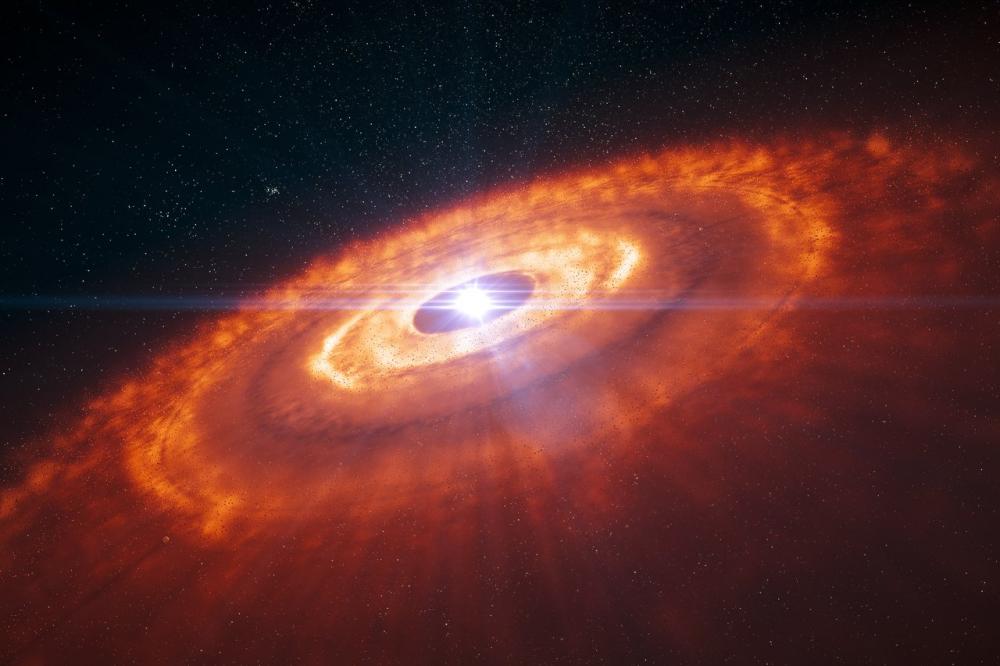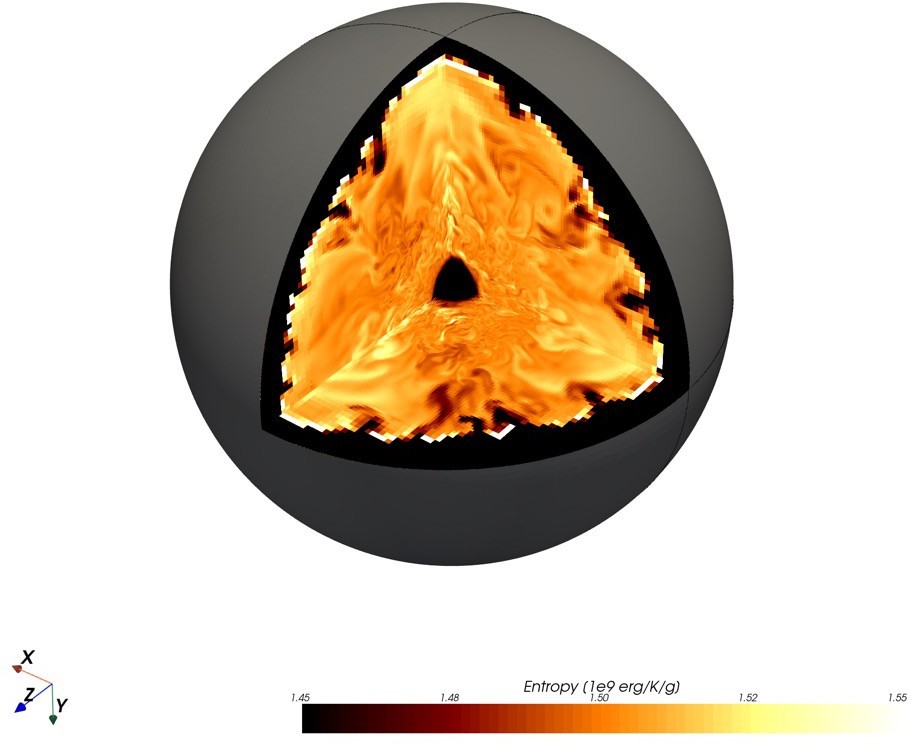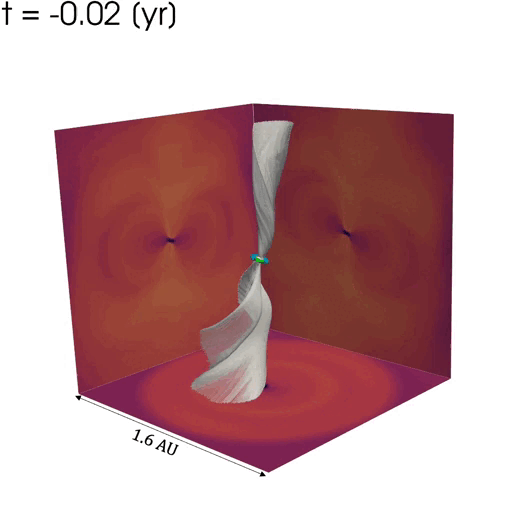Follow us on Google News (click on ☆)

Figure 1: Artist's impression of a young star with a disk of gas and dust (called protoplanetary) orbiting around it.
Credit: ESO/L. Calçada
These simulations provide two major findings: protostars are turbulent from birth, and protoplanetary disks form from material ejected from the star's surface.
These results were published in the journal Astronomy & Astrophysics: The birth and early evolution of a low-mass protostar and Formation of low-mass protostars and their circumstellar disks.
The importance of numerical simulations
In our galaxy, many clouds of dust and gas collapse under gravity, triggering the stellar formation process. The disk of gas and dust surrounding young stars, called the "protoplanetary disk" (see Figure 1), will eventually give rise to planets.
Understanding the evolution of these phenomena provides insights into the formation of our own solar system, Earth, and the emergence of life in the Universe.
Unfortunately, observing the birth of stars and planets is very challenging because the large amount of dust in which young stars are embedded blocks much of their light. As a result, observing their formation remains difficult, even with powerful telescopes such as the James Webb Space Telescope (JWST), to which CEA has contributed.
This is why astrophysicists use supercomputers to perform complex numerical simulations that try to replicate these phenomena based on the laws of physics.
These simulations are, however, very time-consuming. Conducting a simulation that describes the collapse of the cloud and the first year and a half after the birth of protostars requires three months of calculations.

Figure 2: Visualization of the interior of a protostar, illustrating the strong turbulence within. The color indicates the gas entropy, a measure that helps determine if a zone is likely to become turbulent.
Credit: Ahmad et al. (2023).
Star formation
In the first study, the simulations demonstrated that stars are turbulent from birth (see Figure 2), contradicting previous researchers' beliefs.
Indeed, it was thought that turbulence in stars was triggered when nuclear fusion started in their central region (about 100,000 years after their birth). Thanks to the extremely high resolution of the simulations, researchers noticed that an instability at the star's surface could generate large-scale turbulent motions when the star accretes the surrounding gas.
This has implications for the evolution of stars and raises new questions about the origin of their magnetic fields, which require these turbulent movements to trigger a dynamo.
Formation of protoplanetary disks
In a second study, the team considered the effects of rotation in the initial cloud to study the birth of protoplanetary disks together with the star (see Figure 3).
For the first time, the simulations showed that disks form from gas ejected from the star's surface. Indeed, the protostar spins so fast at birth that some of its gas reaches a break-up speed, meaning the centrifugal force becomes so significant that the star's gravity can no longer hold the gas.
This significantly changes the paradigm of disk formation, which until now was studied independently of the star due to computational time constraints.

Figure 3: Simulation of a protostar (green torus) and its accretion disk (blue). The white curves represent the gas velocity field entering the star's poles, attracted by its gravity. The background images are slices representing the gas's radiative emission. In just 10 months, the disk reached half an astronomical unit in radius, or half the Earth-Sun distance, and its vertical extent is such that it envelops the star.
Credit: Ahmad et al. (2024)
Future simulations
The research team is already running new simulations considering the magnetic field within the cloud. This will allow them to study the origin of magnetic fields in stars and how they influence the interaction between the star and the disk.